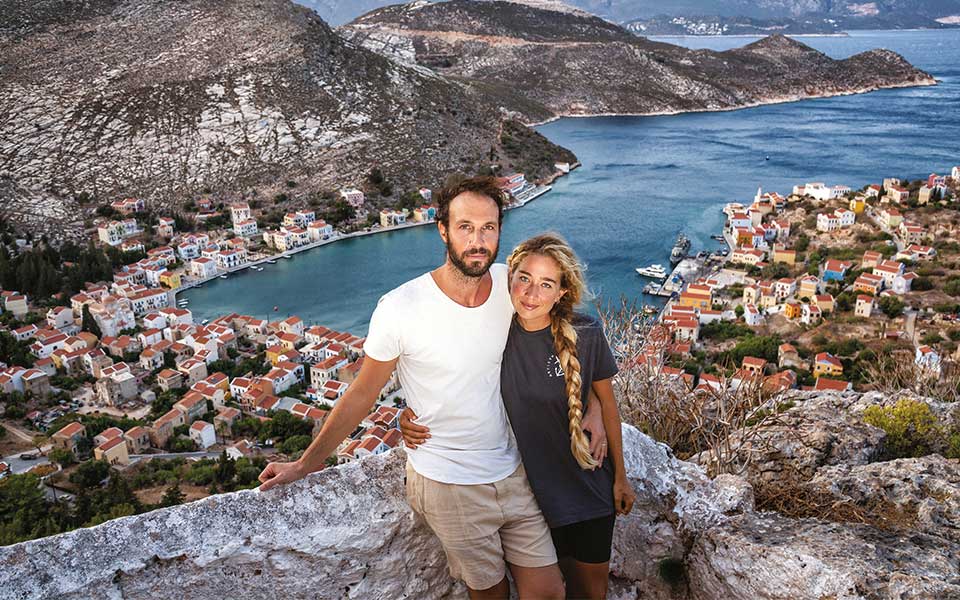At 86, Maria Lazaraki is one of the oldest people on Kastellorizo and a witness to history. I find her on the waterfront, sitting at her family’s taverna after she’s returned from a walk to collect vine leaves for the dolmades on the day’s menu. Like most women of her generation, she is dressed in mourning, yet her ornate gold earrings and a necklace with a pendant indicate that she hasn’t abandoned all coquetry. Time has been kind to her; her clear blue eyes are constantly flitting here and there, and her mind is as sharp as a whip.
The tonal variations of the local dialect add poetry to her dramatic tales of deracination and strife. She tells me in detail of the day the Allies took the island in 1943 and how the Germans responded with air raids, destroying two of the town’s most populous neighborhoods. The bombing forced 1,100 residents to board ships that took them to Cyprus or the adjacent Turkish coast, before they were eventually transferred to the Nuseirat Refugee Camp in Gaza, where they spent the next two years.
The journey back home was marked by more tragedy. “It was six in the morning, September 29, 1945. An alarm sounded at the camp. We were going back to the island. There was laughter and joy. Sixty miles outside Port Said, a fire broke out on the SS Empire Patrol. My mother and siblings were down below. I screamed: ‘Get up here! Fire!’ Young girls were lost. Women drowned with babies in their arms. Old women who couldn’t run burned alive. Thirty-three people perished.” A marble column just a few meters from where we’re sitting lists their names.
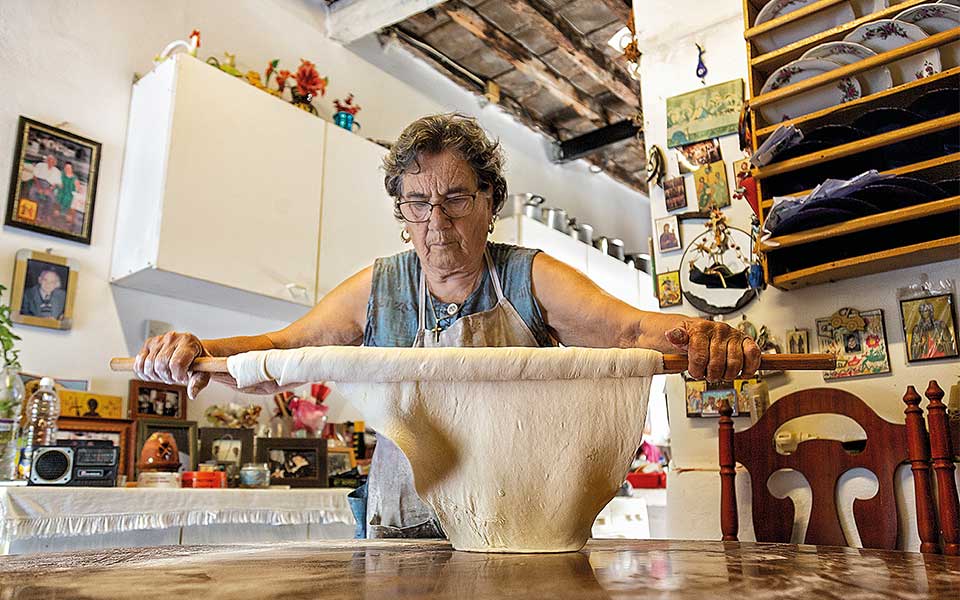
© Nikos Pilos
Haunted by trauma
A sheet of fine filo pastry twists through the air before landing gently on the wooden table. Despina Misomike, 83, is a master at katoumari, a local dessert whose roots have been lost in time. “It’s just humble ingredients – sugar, butter and flour – but the art is in the opening of the filo,” she tells me with the confidence of an old hand. Memorabilia gracing the walls of her home paint a clear picture of this small community: her mother’s wedding, captured in a photo taken in front of the school at the turn of the 20th century; the handwritten banns of her own marriage, once posted in the village; an embroidered blessing in a frame. She, too, experienced the Empire Patrol fire, but also remembers the grand homecoming: “Our enthusiasm swelled as the ship got nearer to port. Home…,” she says, the memory clearly still vivid.
They were met by ruins as they disembarked. The island was wrecked, the homes rendered uninhabitable by bombs and fires. Many Kastellorizians followed family members who’d already emigrated to Australia, while others left for Rhodes and Athens. But there were also the heroes who stayed, toiling to rebuild the island. Despina’s family decided to stay. That moment marked the start of a battle for survival waged by the island’s shrunken population, a struggle that lasted 40 years. The island needed to be rebuilt from the ground up. The destruction of so many properties forced those who decided to stay to repair and move into houses that were in slightly better shape, even if they weren’t theirs. This caused a tremendous amount of confusion with inheritance and property rights and caused no small amount of friction in the community.
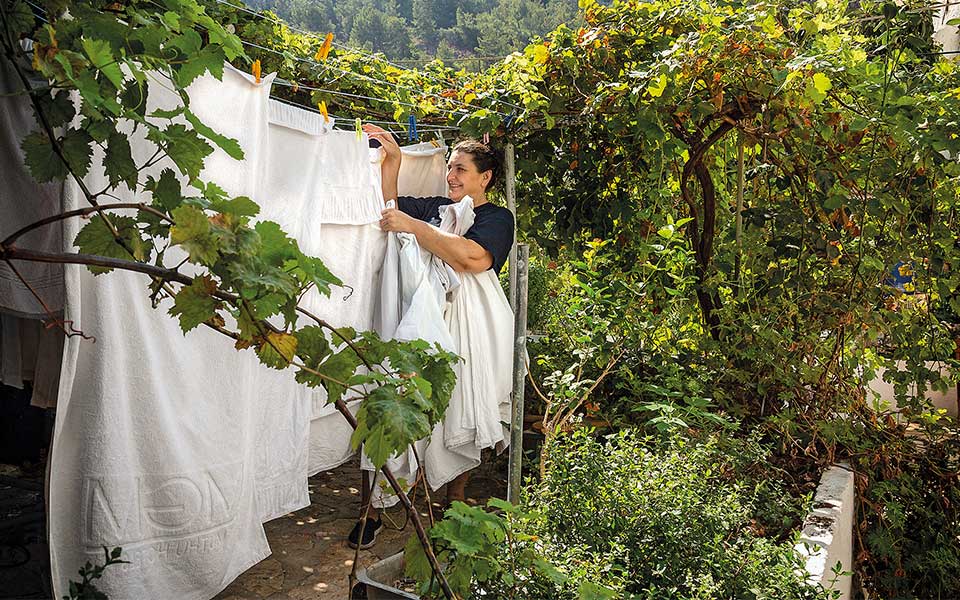
© Nikos Pilos
Largely cut off from the Turkish coast with which they had always maintained traditional ties and where part of their assets lay, and with Rhodes 72 nautical miles away, they had to rely on the barest of resources. Traditionally middle class and well-to-do, they’d never grown fruits or vegetables in the arid soil; this was a mercantile society that had lost its footing and was now cut off from every source of sustenance, often for weeks on end. Misomike remembers the arrival of the ship from Rhodes, the island’s only connection to the outside world, in those days. There were times when the weather did not allow it to tie up and loaves of bread were just thrown onto the shore; there were times when it did tie up and island residents would fight each other over a cucumber. “We’d cut them in half, so everyone could get some,” she recalls.
What compelled them to stay in poverty among the ruins? They had family in Australia. They had incentives from the state to relocate elsewhere. I pressed this question with both the ladies. They sidestepped it. I only got my answer on the day I left Kastellorizo (see my postscript).
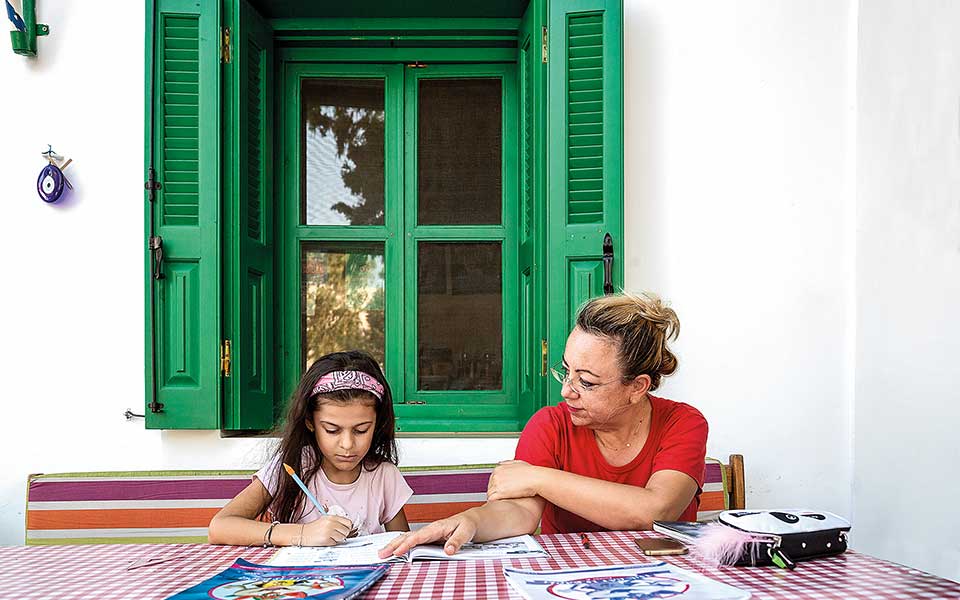
© Nikos Pilos
After the credits rolled
The taverna Platania in Horafia is abuzz with activity. Maria and Katina Magiafi and Katina’s daughter Maria Kokala are all busy at work preparing the dishes of the day. Still, there is a companionable mood in the spacious kitchen, one that invites you to spend hours here listening to stories, exchanging banter and nibbling from all the steaming pots and pans as they come off the stove-top or out of the oven.
The walls are covered in posters and photographs from “Mediterraneo,” the WWII film that took the Oscar for Best Foreign Language Film in 1991. The film was momentous for Kastellorizo, and Katina remembers the days when it was being filmed on the island as some of the best in her life. “The entire island worked on the film, and we all got paid. And once the shooting was over, they left us with the island’s greatest modern legacy: tourism.”
The film, and its success, established Kastellorizo as a vacation destination. The Italian cast and crew became its ambassadors and most returned for summer stays. Many even bought second homes here. Hot on the heels of the Italians came the French and then the British. Those who fall in love with the island do so passionately, and come again and again. The construction of an airport made access much easier, while Kastellorizians who had emigrated to Australia and other parts of the world also started coming back, drawn by a love for their roots. The strong diaspora community, who had maintained their ties with the island and helped support its residents financially, started restoring the abandoned houses (and reopened old property disputes in the process).
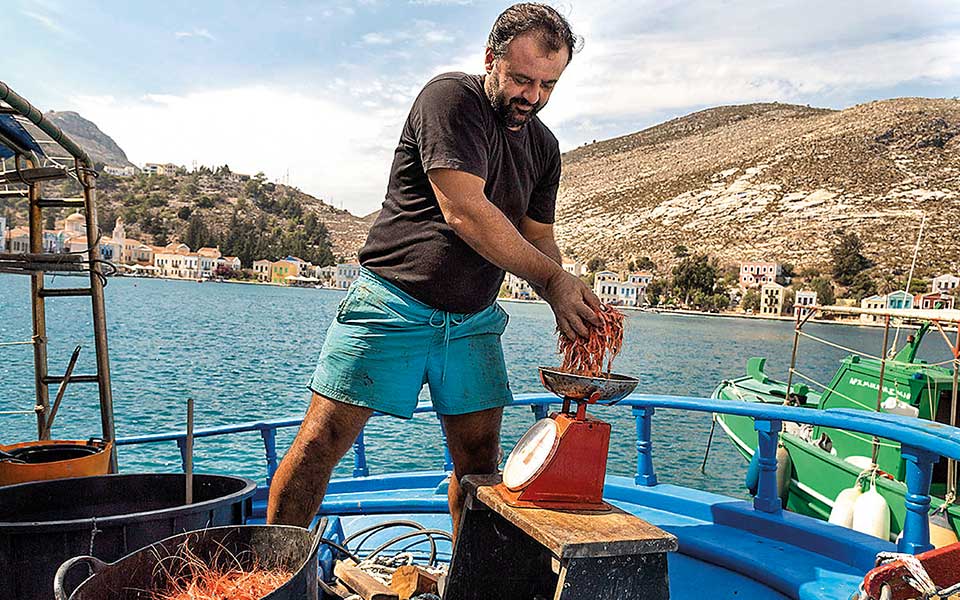
© Nikos Pilos
The town gradually began acquiring its present shape. The number of ruins shrank, and old neighborhoods came back to life. Staircases, entrance ways, and door knobs and knockers gave a new shine to old wealth. Architectural details that testified to the island’s cosmopolitan history were restored, and newly built houses adhered to old aesthetic principles. The waterfront promenade – the Kordoni (“Shoelace”) – was transformed into a hub of summer activity, the place where everything happened.
In the meantime, the opening of the borders with Turkey in the last decade gave tourism an even greater boost, while the farmers’ markets at Kaş (Antiphellos to Greeks) became accessible again, as they’d been in pre-war times, offsetting the difficulties of relying on supplies from Rhodes. There’s a small boat that takes the islanders across to the weekly market and on other supply runs to the traditional Turkish bazaars. Some Kastellorizians even have homes on the Turkish coast – as they’d had before the war. Vacation packages and excursions in both directions haven’t just generated income for those involved, they’ve created powerful bonds of friendship and even, on occasion, marriages.
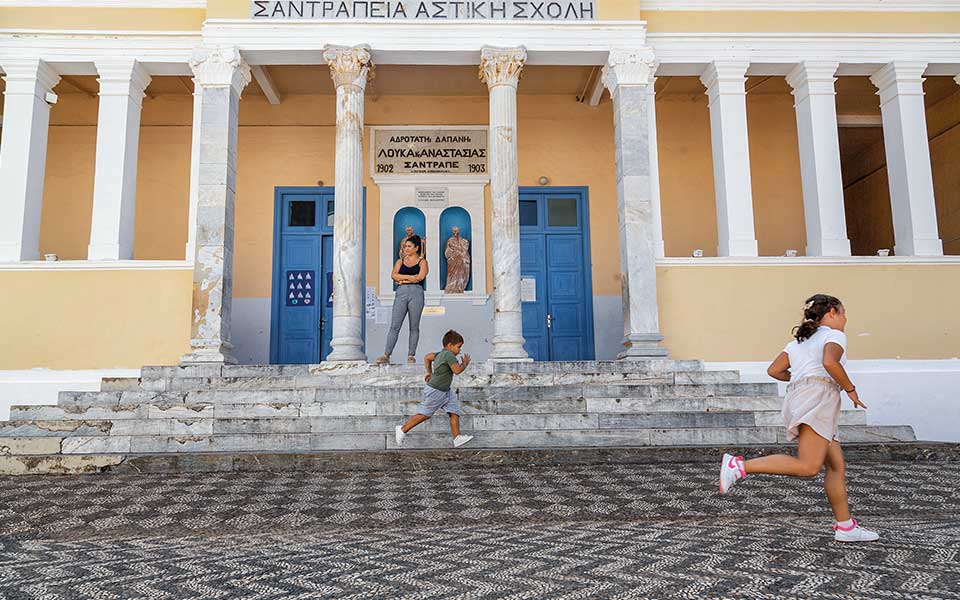
© Nikos Pilos
The fact that Kastellorizo marks the farthest reach of Europe, the absolute border between West and East, and a literal and metaphorical body of immense geostrategic importance in the Aegean Sea are issues that – as is often the case on frontiers all over the world – are of more concern to analysts than to the locals.
One of the many people who arrived on the cosmopolitan wind of tourism was French architect Marie Rivalant, who opened the hotel Mediterraneo in the 1990s. This boutique hotel offers the kind of vacation many visitors hope for on Kastellorizo: understated luxury and a bed that’s only meters from the sea. I meet her on the veranda where guests have their breakfast. In this tiny community, she stands out as a foreigner, though she has become something of a local after marrying Kastellorizian Giorgos Lazarakis. “I’ll always be foreign,” she acknowledges. “But there’s nothing wrong with that,” she adds, laughing. She brings me a glass of water and another of cold lemonade. “It is not just the architecture or the landscape that makes the island so alluring; it’s also the effort needed to get here,” she says. “You feel that you’re rewarded for the journey.”
I enjoy the view of the landscape from the hotel’s veranda, a scene packed with “Greekness,” and wonder if this is why the then prime minister chose the last spot in Europe as the place to announce that Greece was entering the International Monetary Fund bailout mechanism in the spring of 2010. How can anyone stay focused on such bad news when there’s so much beauty in the background? Maybe this is why the Kastellorizians have withstood so much misery and hardship: the beauty.
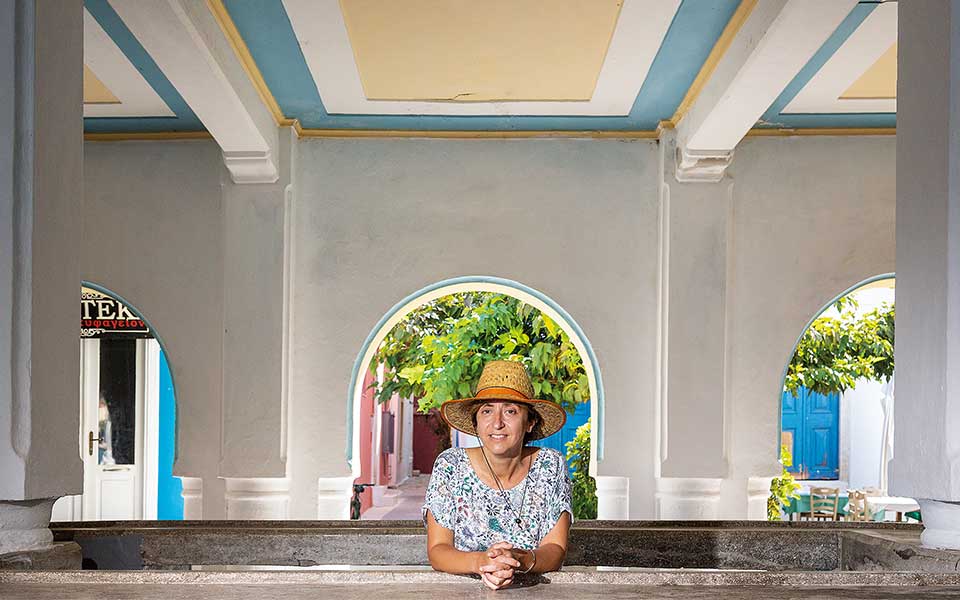
© Nikos Pilos
The new order
Kastellorizo’s school, named after benefactor Loukas Santrape, is an interesting historical monument. Its façade was designed to replicate the University of Athens, and it was inaugurated in 1903 by its founder who hoped to provide a high-caliber education to local pupils by employing teachers from Athens, Rhodes and Asia Minor as well as from the island. Today, it has 40 students ranging from elementary to high-school age. “Growing up on such a small island is paradise for young children, but it gets much harder as they get older. They don’t have the same educational opportunities as children in the rest of Greece, such as additional learning and extracurricular activities,” says Betty Mouzak, principal of the middle and high school. Only a handful will pursue university studies after graduating, and most of the children will stay on the island, secure that they’ll have a job in tourism, a promising field despite the current pandemic.
There’s a lot of potential for growth and development in Kastellorizo; to take just one example, the Municipal Market is ripe for better utilization. Built under Italian rule, it’s a fascinating building, and the favorite spot of Fotini Chalvantzi. This young architect, who forged ties with Kastellorizo eight years ago while overseeing a restoration project at the Monastery of Aghios Georgios tou Vounou, currently works on residential restoration and is doing her PhD on the architecture of the town. Our conversation focused on the island’s future.
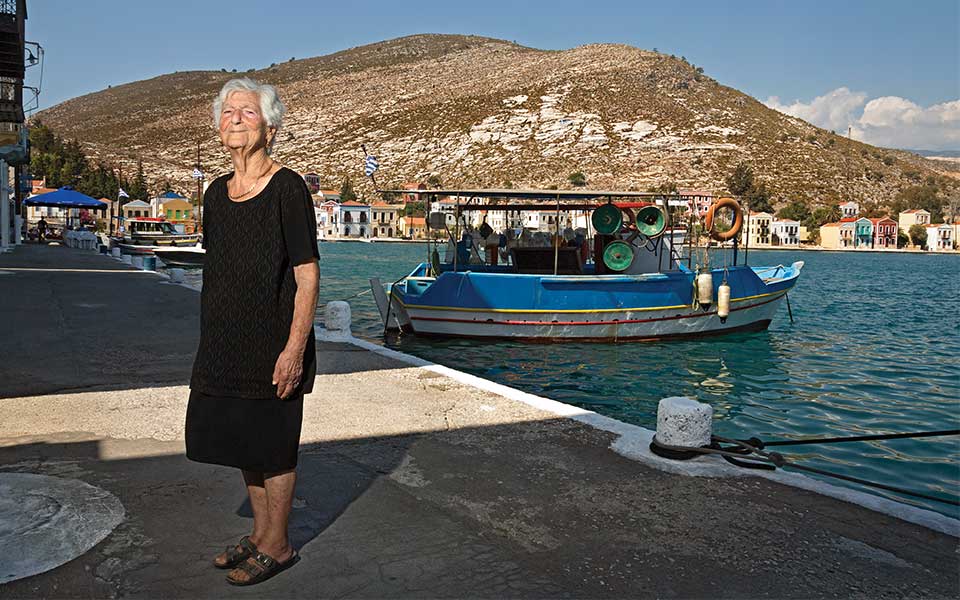
© Nikos Pilos
“Kastellorizo is on the tourist map for one-off and repeat visitors, day-trippers from Turkey, and foreign nationals and members of the diaspora who own summer homes here. As it grows in popularity, it finds itself at a critical juncture that will determine its evolution. Construction activity needs to be carried out under the proper conditions, with respect for the settlement’s traditional character. Upgrading the infrastructure with relation to the water grid, waste management and recycling, and the sewage system, are the biggest challenges for the island right now,” she says, referring to an issue everyone agrees is a priority.
These are, indeed, important challenges and ones that will determine the island’s tourism potential. Many express concern about the marine environment, the poor sanitation services outside the center of town, the fact that the island relies on an old-fashioned landfill and the stalled recycling program.
These are troubling concerns, especially in a place that is just so breathtakingly beautiful. With dramatic cliffs, walking trails, uncharted history and a wealth of flora, Kastellorizo is a destination aching to be discovered but begging to be protected, too.
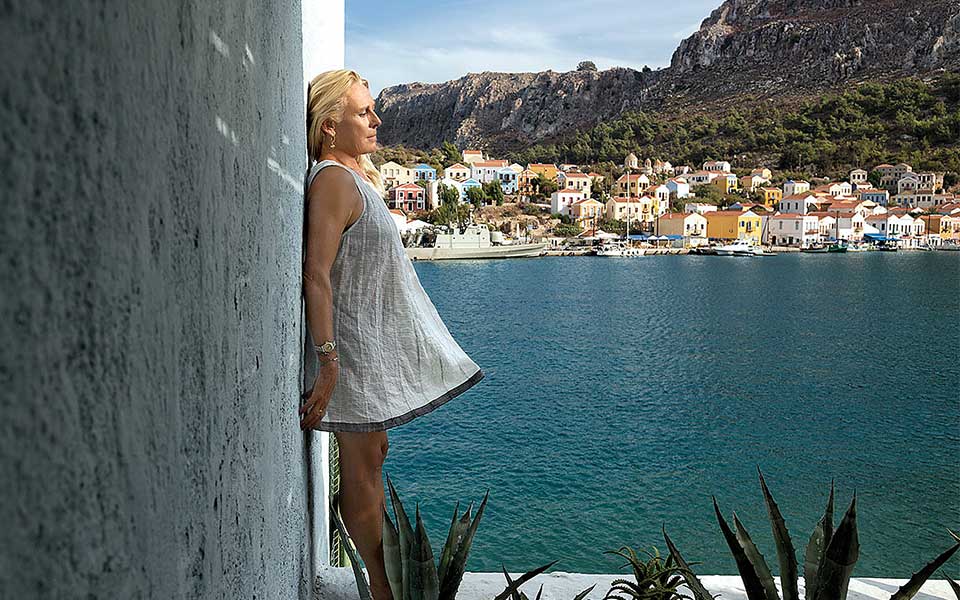
© Nikos Pilos
Postscript
My departure flight was canceled and I had to spend an additional three days on the island. Such occurrences are, it seems, quite common. “It’s the island that makes the plans here, not you,” the owner of my hotel said stoically, sharing none of my frustration, even though her plans had also been upset.
And in these words I found the answer to why people decided to remain when Kastellorizo was a shattered ruin of its former self. They chose this life at the edge of the Greek world, and they endured. And, like a phoenix, when this island rose from the ashes, it came out stronger. Any sense of vulnerability due to Kastellorizo’s geographical location belongs exclusively to passing travelers.

